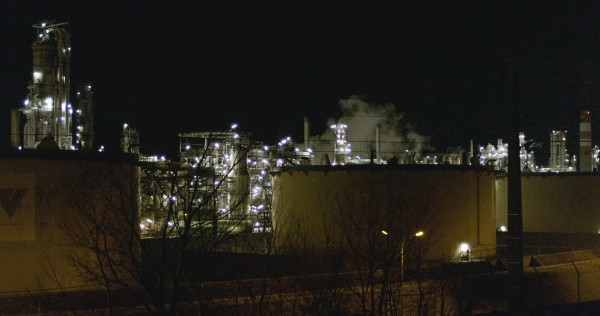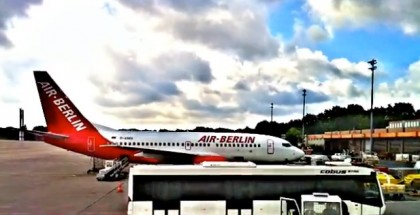Low light comparison between the RED Scarlet & Canon C300
Disclaimer: This is not a scientific test. We have had the chance to test the two cameras at the same location but different dates and with different lenses and decided to compare them to get a rough feel for each cameras low light sensitivity.
This was originally posted as a guest post on Cinema5D – click here to go to the original article.
The RED Scarlet and the Canon C300 – two cameras that were presented on the same day, sporting a comparable price point – but that’s about where the similarities end. Two different cameras for two different markets. On the surface and only looking at the specs, it seems easy to point out which one is the superior camera:
The Scarlet delivers a 4K RAW image, allowing all sorts of wizardry and adjustment in post production, usually only known from significantly more expensive cinema cameras. The high data rate and resolution of course mean it’s tough to use for your everyday run-and-gun kind of jobs, because computing-heavy post processing of the images is absolutely required. The images out of it are incredibly detailed and sharp, and it comes at no surprise that RED cameras (mostly the Epic so far) have become the tool of choice for an increasing number of Hollywood productions (take, for example, Peter Jackson’s The Hobbit – of course, for better or worse, in 3D).
The C300, on the other hand, is a 1080p camera at roughly the same price point. It delivers 8bit video in a 50Mbit/s 4:2:2 codec. As I said, on the surface that doesn’t compare well to the Scarlet. Having worked with it extensively on ashort film shoot though, I have to say that it is about the most intuitive and natural camera I have ever worked with – it works with EF lenses (as does the Scarlet), it is reliable, and the images look drop-dead gorgeous – without all the compromises we have become used to from Canon DSLRs: no moiré, no aliasing, very little rolling shutter. It’s your everyday camera and allows for cinema-quality images while allowing a speed of working we are only used to from broadcasting.
Canon EOS C300:
RED Scarlet-X (post processed):
Comparing the image in low light
Despite the fact that those two are very different beasts, we grabbed the chance to put the two cameras in the same extreme low light situation, and look at what we get.
In fact, fellow Vienna-based DP and Cinema5D admin Sebastian Wöber called me and said that he wanted to try out his new Scarlet at the exact same spot as we did for our C300 short “13:59”, which we shot in less than 2 days when we had the camera for only a short while about 3 weeks ago (click here to check it out and read the full review). I’ve had a similar thing in mind already, so I was really looking forward to the results and gave Sebastian exact details of the location. And the results are probably as expected, but I didn’t really think there would be THAT much difference.
4K sounds vastly superior – it’s 4 times the resolution of 1080p. But apart from the computing-heavy post production, there is one other downside to it: light sensitivity. If the pixels sit densely on a chip, they absorb more light, less resolution leaves more light for the individual pixel. The other part of the reason is the fact that the Mysterium-X sensor inside the Scarlet is now around 3-year-old technology. It’s not the most recent tech anymore and light sensitivity is an area where sensor technology seems to improve exponentially in recent years. RED will be bringing a new sensor to market which is supposed to be much better in low light.
The C300 goes up to a staggering 20,000 ISO – and if you ask me, it is still very usable. Grain is of course visible at this level, but it’s not as ugly and colorful as the grain we get from current Canon DSLRs even at 3200 ISO, and it’s something that can be controlled and further reduced using noise reduction software.
Check out the two still frames straight off the cameras, without any post production, above.
The image recorded with the C300 was shot at 20,000 ISO at f/2.5 at 77mm.
The image recorded with the Scarlet was shot at f/1.4 at 35mm. Please note that ISO and gamma curves can be adjusted afterwards – on the left you can see what the RAW image looks like without any adjustments, and it doesn’t do it justice because a lot of information is simply not visible to the eye.
After some color correction it becomes clear that the camera hasn’t picked up as much detail as the C300 at this low light level and sharpness fades. Adding noise reduction right in REDCINE-X delivers no discernible difference, so we went ahead and processed the image further (see above).

Here you can see the metadata from the C300. The image was shot at f/2.5.
Please note that this is not something you would shoot every day. Take this real-life test with a grain of salt. It’s an extreme low light situation and we were hardly able to see our own hands there. When shooting a narrative film – where a Scarlet could be used – you are likely to put up proper lighting anyway, while on location for, say, some actuality stuff, the C300 would be a better fit.
In all, it’s clear that the C300’s new sensor excels in low light situations, which will allow for whole new ways of filmmaking in dark zones, were much less artificial light can be used to accentuate something.
You can download the original R3D RAW file here to play with:
DOWNLOAD
RED has a utility to inspect and do some grading on R3D files. Download REDCINE-X here.
-
3-12-2012? on the metadata…hehe dam u like almost 4 month ahead haha



























Comments